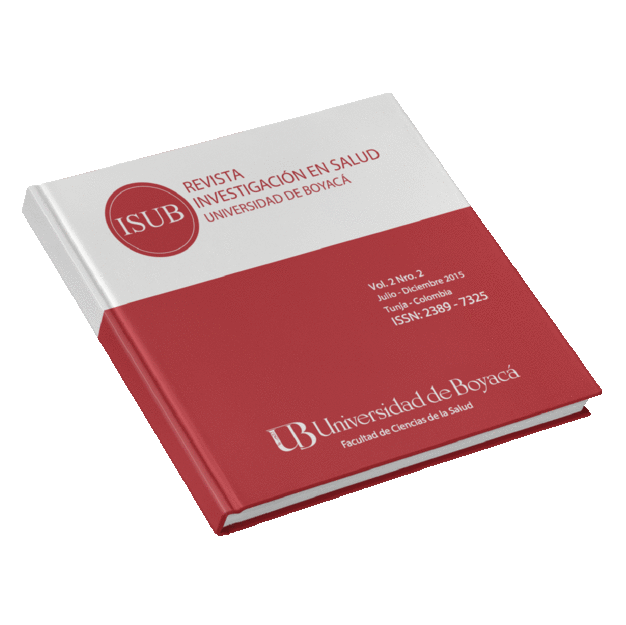Actividad física y función cognitiva: una comparación en dos grupos de adultos mayores, un estudio piloto
Actividad física y función cognitiva: una comparación en dos grupos de adultos mayores, un estudio piloto
Contenido principal del artículo
Resumen
Objetivo: Comparar la función cognitiva de un grupo de adultos mayores activos y otros no activos.
Método: Se trata de un estudio descriptivo transversal de 62 sujetos, 32 activos y 30 sedentarios. Los adultos mayores que se consideraron activos fueron aquellos sujetos que participaron en un programa regular de actividad física por, al menos, 12 semanas. El otro grupo estuvo compuesto por sujetos que no realizaban ninguna actividad física. La función cognitiva se evaluó mediante el instrumento Mini-Mental State Examination (MMSE).
Resultados: La edad promedio del grupo activo fue de 67,6 años con desviación estándar (DE) de 7,03, sin diferencias estadísticas con el grupo de comparación (p=0,915). Se encontraron diferencias en las esferas de orientación (p<0,001), atención y cálculo (p<0,001), lenguaje (p<0,001) y en la puntuación total (p<0,001).
Conclusión. Los adultos mayores que se consideraron activos tuvieron mejores niveles de funcionamiento cognitivo.
Palabras clave: anciano, actividad motora, salud mental.
Descargas
Datos de publicación
Perfil evaluadores/as N/D
Declaraciones de autoría
Indexado en
- Sociedad académica
- Universidad de Boyacá
- Editorial
- Universidad de Boyacá
Detalles del artículo
Referencias (VER)
2. World Health Organization. Dementia: A public health priority. Geneva: World Health Organization; 2012. Septiembre 2015 Disponible en: http://www. who.int/mental_health/publications/ dementia_report_2012/en/.
3. Chang YK, Pan CY, Chen FT, Tsai CL, Huang CC. Effect of resistance exercise training on cognitive function in healthy older adults: A review. J Aging Phys Act. 2012;20:497-517.
4. Barnes DE, Yaffe K. The projected effect of risk factor reduction on Alzheimer’s disease prevalence. Lancet Neurol. 2011;10:819-28.
5. Rovio S, Kareholt I, Helkala EL, Viitanen M, et al. Rovio S, Kåreholt I, Helkala E, Viitanen M, Winblad B, Tuomilehto J, Soininen H, Nissinen A, Kivipelto M. Leisure-time physical activity at mid life and the risk of dementia and Alzheimer’s disease. Lancet Neurol. 2005;4:705-11.
6. Knöchel C, Oertel-Knöchel V, O’Dwyer L, Prvulovic D, Alves G, Kollmann B, et al. Cognitive and behavioural effects of physical exercise in psychiatric patients. Prog.Neurobiol. 2012;96:46-68.
7. Boyle PA, Yu L, Wilson RS, Segawa E, Buchman AS, Bennett DA. Cognitive decline impairs financial and health literacy among community-based older persons without dementia. Psychol Aging. 2013;28:614-24.
8. Sigal RJ, Armstrong MJ, Colby P, Kenny GP, Plotnikoff RC, Reichert SM, et al. Physical activity and diabetes. Can J Diabetes. 2013;37:S40-4.
9. Takata Y, Ansai T, Soh I, Awano S, Nakamichi I, Akifusa S, et al. Cognitive function and 10 year mortality in an 85 year-old community-dwelling population. Clin Interv Aging. 2014;9:1691-9.
10. Sillanpää E, Häkkinen K, Holviala J, Häkkinen A. Combined strength and endurance training improves health-related quality of life in healthy middle-aged and older adults. Int J Sports Med.. 2012;33:981-6.
11. Hertzog MA. Considerations in determining sample size for pilot studies. Res Nurs Health. 2008;31:180-91.
12. Marcus B, Forsyth L. Motivating people to be physically active. Second edition. Web site: www. HumanKinetics.com 2009.
13. Marcus BH, Ciccolo JT, Sciamanna CN. Using electronic/computer-based interventions to promote physical activity. Br J Sports Med. 2009;43:102-5.
14. Brayne C. The Mini-Mental State Examination, will we be using it in 2001? Int J Geriatr Psychiatry. 1998;13:285-90.
15. Crum RM, Anthony JC, Bassett SS, Folstein MF. Population-based norms for the Mini-Mental State Examination by age and educational level. JAMA. 1993;269:2386-91.
16. Valencia C, López-Alzate E, Tirado V, Zea-Herrera MD, Lopera F, Rupprecht R, et al. Efectos cognitivos de un entrenamiento combinado de memoria y psicomotricidad en adultos mayores. Rev Neurol. 2008;46:465-71.
17. Franco-Marina F, García-González JJ, Wagner-Echeagaray F, Gallo J, Ugalde O, Sánchez-García S, et al. The Mini-Mental State Examination revisited: Ceiling and floor effects after score adjustment for educational level in an aging Mexican population. Int Psychogeriatr. 2010;22:72-81.
18. Bravo G, Hebert R. Age-and education-specific reference values for the Mini-Mental and modified Mini-Mental State Examinations derived from a non-demented population. Int J Geriatr Psychiatry. 1997;12:1008-18.
19. Lautenschlager NT, Cox KL, Flicker L, Foster JK, van Bockxmeer FM, Xiao J, et al. Effect of physical activity on cognitive function in older adults at risk for Alzheimer disease: A randomized trial. JAMA. 2008;300:1027-37.
20. Sofi F, Valecchi D, Bacci D, Abbate R, Gensini GF, Casini A, et al. Physical activity and risk of cognitive decline: A meta-analysis of prospective studies. J Intern Med. 2011;269:107-17.
21. Colcombe S, Kramer AF: Fitness effects on the cognitive function of older adults: A meta-analytic study. Psychol Sci. 2003;14:125-30.
22. Correa JE, Gámez ER, Ibáñez M, Rodríguez KD. Aptitud física en mujeres adultas mayores vinculadas a un programa de envejecimiento activo. Rev Univ Ind Santander Salud 2011;43:263- 9. Fecha de consulta: 28 de abril de 2015. Disponible en: http://www.scielo. org.co/scielo.php?script=sci_arttext&pid=S012108072011000300007&lng=en.
23. Theill N, Schumacher V, Adelsberger R, Martin M, Jancke L. Effects of simultaneously performed cognitive and physical training in older adults. BMC Neurosci. 2013;14:103.
24. Haskell WL, Lee IM, Pate RR, Powell KE, Blair SN, Franklin BA, et al. Physical activity and public health: Updated recommendation for adults from the American College of Sports Medicine and the American Heart Association. Med Sci Sports Exerc. 2007;39:1423-34.







